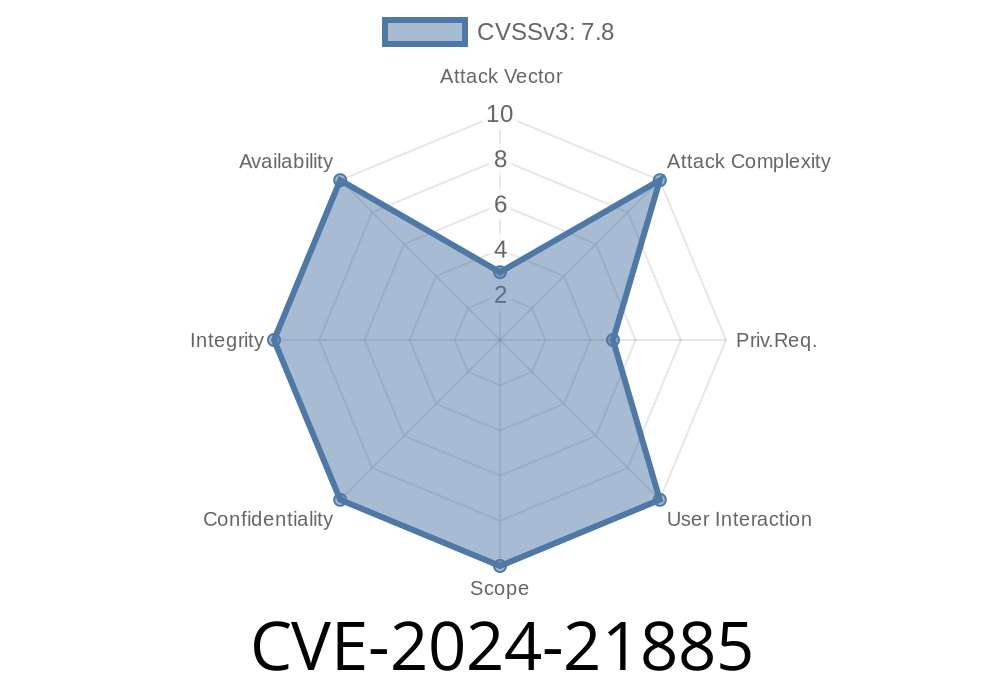A new security vulnerability, CVE-2024-21885, has been discovered in the X.Org Server – the core display server for Linux UNIX systems. This flaw can potentially allow attackers to crash the X server or even execute remote code, especially when leveraged through SSH X11 forwarding.
In this article, we’ll break down the bug, look at where it lives in the X.Org code, and show how it might be exploited. We’ll also direct you to the technical sources for further reading and patch information.
What is CVE-2024-21885?
CVE-2024-21885 is a heap buffer overflow vulnerability found in the XISendDeviceHierarchyEvent function of the X.Org server. When new input devices get reported, the function does not check array bounds correctly on the xXIHierarchyInfo structure. An attacker can exploit this, especially in cases like X11 forwarding over SSH, to cause the application to crash, or with some effort, to run arbitrary code.
Let’s look at a (simplified) section of the vulnerable code
int XISendDeviceHierarchyEvent(
/* ... */,
xXIHierarchyInfo* info
) {
xXIHierarchyInfo* event;
int num_events = info->num_devices;
// Allocate an event array
event = malloc(num_events * sizeof(xXIHierarchyInfo));
// Assume new_device count can be larger than num_events
for (int i = ; i < info->num_new_devices; i++) {
event[i] = info->new_devices[i]; // Potential overflow!
}
// ... continue processing
}
The danger here is if num_new_devices is greater than num_events, the copying loop above writes past the allocated event array – classic heap buffer overflow.
In Practice
A malicious client – for example, a user connected through SSH with X11 forwarding enabled (ssh -X user@host) – could send intentionally malformed input device hierarchy messages to the X server. By crafting a message with more new_devices than the X server expects, the attacker triggers the overflow.
Depending on the memory layout and the skill of the attacker, this can crash the server or, in some advanced cases, can let the attacker run arbitrary code as the X server user. On multi-user systems, or in shared graphical environments, this may be enough to escalate privileges or spy on users’ sessions.
Example Proof of Concept
*A working proof of concept requires deeper exploitation techniques and is risky to share in full. But here’s the gist of how such code could be structured:*
# Pseudocode - concept only!
import xpyb # Python XCB bindings, as an example
conn = xpyb.connect(display="localhost:10.") # X11 forwarded display
# Build a hierarchy event with too many new_device entries
payload = b"..." # crafted data exceeding proper counts
conn.send(payload)
conn.flush()
Update X.Org server to a patched version. Fixes are underway at the official repo:
X.Org security advisory & patch
- Disable SSH X11 forwarding (/etc/ssh/sshd_config: X11Forwarding no) unless absolutely necessary
- Restrict X server access: use Unix domain sockets/BSD authentication, MAC policies, or shift to Wayland if possible
References
- CVE-2024-21885 at NVD
- X.Org upstream patch
- X.Org security mail list
Conclusion
CVE-2024-21885 underscores the ongoing risks of running legacy display technology and the importance of keeping system packages updated. Tighten X11 and SSH settings, patch promptly, and consider newer graphical stacks like Wayland where possible.
Have a unique scenario at your workplace? Share your mitigation tips or questions below—we’re all here to learn from each other!
Timeline
Published on: 02/28/2024 13:15:08 UTC
Last modified on: 02/28/2024 14:06:45 UTC
